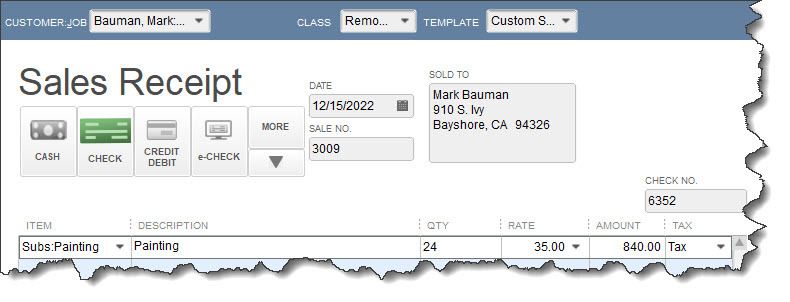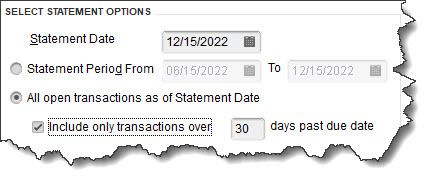President Trump signed the Families First Coronavirus Response Act H.R. 6201into law on March 18, 2020. In the coming days and weeks, there will be additional bills that will expand, modify, and clarify H.R. 6201. The following Frequently Asked Questions surrounding H.R. 6201 was devised to help answer questions you may have. Updates will be posted as new information is made available.
FAQ – What businesses are affected by the new bill?
If you have fewer than 500 employees, then this bill covers your business
FAQ – When does this bill go int effect?
The bill was signed into law on March 18, 2020 and goes into effect 15 days later and will remain into effect until the end of 2020.
FAQ – Can I opt out of the new bill?
Companies with fewer than 50 employees will be allowed to opt out of the bill provisions if it would jeopardize the viability of the business.
Companies between 50 and 500 employees cannot opt out of the bill’s provisions.
FAQ – How can I opt out if the viability of my business would be affected by this bill?
The Secretary of Labor has the authority to exempt small businesses with fewer than 50 employees from the bill’s paid leave. The Department of Labor will establish guidelines and procedures on how small businesses will be able to apply for this exemption.
FAQ – I’m a healthcare provider. Can I exclude the leave provisions of this bill?
Exception for Health Care Providers and Emergency Responders. Employers who are health care providers or emergency responders may elect to exclude their employees from the public health emergency leave provisions of the bill.
FAQ – What paid leave can my employees claim?
- They have been exposed to coronavirus or exhibit symptoms
- They are recommended to quarantine by a healthcare provider and cannot work from home
- They need to care for a family member who has been exposed to coronavirus or exhibits symptoms of coronavirus
- They need to care for a child younger than 18 years old because their school or day care is closed, or their childcare provider is unavailable.
FAQ – How much paid leave can my employees claim?
Employees under the bill are entitled to 10 weeks of paid leave (a provision of the bill has any extension beyond 10 weeks to be granted only to parents taking care of children with shuttered schools and day care centers).
The first 14 days of leave: under the bill, the first 14 days in which an employee takes emergency leave may be unpaid. An employee may elect, or an employer may require the employee, to substitute any accrued paid vacation leave, personal leave, or sick leave for unpaid leave.
Paid Leave Rate for Subsequent Days:After 14 days of unpaid leave, an employer is required to provide paid leave at an amount not less than two-thirds of an employee’s regular rate of pay up to $200 per day or $10,000 in the aggregate.
The bill also addresses hourly employees whose schedules vary to the extent than an employer cannot determine the exact number of hours the employee would have worked. For those employees, the employee’s paid leave rate should equal the average number of hours that the employee was scheduled per day over the six-month period prior to the leave. If the employee did not work in the preceding six-month period, the paid leave rate should equal the “reasonable expectation” of the employee at the time of hiring with respect to the average number of hours per day that the employee would be scheduled to work.
The following are further details:
Paid Sick Time: Full-time employees are entitled to 80 hours of paid sick leave. Part-time employees are entitled to the number of hours that the employee works, on average, over a two-week period.
For hourly employees whose schedules vary, the employee’s paid leave rate should equal the average number of hours that the employee was scheduled per day over the six-month period prior to the leave. If the employee did not work in the preceding six-month period, the paid leave rate should equal the “reasonable expectation” of the employee at the time of hiring with respect to the average number of hours per day that the employee would be scheduled to work.
Once an employee’s coronavirus-related need for using the emergency paid sick leave ends, then the employer may terminate the paid sick time. Further, paid sick time provided under H.R. 6201 shall not carry over from one year to the next.
Paid Leave Rate: Employees who take paid sick leave because they are subject to a quarantine or isolation order, have been advised by a health care provider to self-quarantine, or are experiencing coronavirus symptoms and seeking medical diagnosis are entitled to be paid at their regular pay rate or at the federal, state or local minimum wage, whichever is greater. In these circumstances, the paid sick leave rate may not exceed $511 per day, or $5,110 in aggregate.
Employees who take paid sick leave to care for another individual or child or because they are experiencing another substantially similar illness (as specified by HHS) are entitled to be paid at two-thirds their regular rate. In these circumstances, the paid sick leave rate may not exceed $200 per day, or $2,000 in aggregate.
The bill requires the Secretary of Labor to issue guidelines to assist employers in calculating paid sick time within 15 days of the bill’s enactment.
FAQ – Can I discourage my employees from taking this leave?
Employers cannot discourage or prevent eligible employers from claiming paid sick leave. If they do, it could be considered discriminatory or an obstruction of their legal rights.
Employer Notice Requirement:Employers shall post and keep posted, in conspicuous places, notice of the emergency paid sick leave requirements made available under H.R. 6201. Within seven days of the enactment of the bill, the Secretary of Labor will provide a model notice for use by employers.
FAQ – Will my business get reimbursed
Employers initially pay for the sick leave and are reimbursed by the federal government within three months through refundable tax credits that count against employers’ payroll tax.
FAQ – How does the reimbursement work?
EMPLOYER TAX CREDITS
H.R. 6201 provides for employer tax credits to offset the costs associated with the paid public health emergency leave and sick leave required for employees under Divisions C and E of the bill.
Payroll Tax Credit: The bill provides a refundable tax credit worth 100 percent of qualified public health emergency leave wages (as provided by Division C) and qualified paid sick leave wages (as provided by Division E) paid by an employer for each calendar quarter through the end of 2020. The tax credit is allowed against the tax imposed under the employer portion of Social Security and Railroad Retirement payroll taxes.
Credit Amount: The bill allows employers to take tax credits for qualified public health emergency leave wages and qualified sick leave wages:
Credit Amount for Public Health Emergency Leave Wages. The amount of qualified public health leave wages taken into account for each employee is capped at $200 per day and $10,000 for all calendar quarters.
Credit Amount for Sick Leave Wages. In instances when an employee receives paid sick leave because they are subject to a quarantine or isolation order, have been advised by a health care provider to self-quarantine, or are experiencing coronavirus symptoms and seeking medical diagnosis, the amount of qualified sick leave wages taken into account for each employee is capped at $511 per day.
n instances when an employee receives paid sick leave because they are caring for another individual or child or because they are experiencing another substantially similar illness (as specified by HHS) the amount of qualified sick leave wages taken into account for each employee is capped at $200 per day.
In determining the total amount of an employer’s qualified sick leave wages paid for a calendar quarter, the total number of days that the employer can take into account with respect to a particular employee for that quarter may not exceed 10 days minus the number of days taken into account for that employee for all previous quarters.
Credit for Health Plan Expenses. Under the bill, the public health emergency leave and paid sick leave credits would be increased to include amounts employers pay for the employee’s health plan coverage while they are on leave. Specifically, the bill allows for the credit amounts to be increased by the amount of the employer’s group health plan expenses that are “properly allocated” to the qualified emergency leave and sick leave wages. Health plan expenses are “properly allocated” to qualified wages if made on a pro rata basis (among covered employees and periods of coverage).
FAQ – If an employee goes on leave, then what happens when they come back to work?
Generally, eligible employees who take emergency paid leave are entitled to be restored to the position they held when the leave commenced or to obtain an equivalent position with their employer. H.R. 6201 limits this rule for employers with fewer than 25 employees. In such circumstances, if an employee takes emergency leave, then the employer does not need to return the employee to their position if:
- The position does not exist due to changes in the employer’s economic or operating condition that affect employment and were caused by the coronavirus emergency;
- The employer makes “reasonable efforts” to restore the employee to an equivalent position; and
- If these efforts fail, the employer makes an additional reasonable effort to contact the employee if an equivalent position becomes available. The “contact period” is the one-year window beginning on the earlier of (a) the date on which the employee no longer needs to take leave to care for the child or (b) 12 weeks after the employee’s paid leave commences.
Refundability of Excess Credit: The amount of the paid sick leave credit that is allowed for any calendar quarter cannot exceed the total employer payroll tax obligations on all wages for all employees. If the amount of the credit that would otherwise be allowed is so limited, the amount of the limitation is refundable to the employer.
Limitation on Tax Credits:Employers may not receive the tax credit if they are also receiving a credit for paid family and medical leave under the 2017 Tax Cuts and Jobs Act (P.L. 115-97). Employers would instead have to include the credit in their gross income.
FAQ – My business was shut down and I had to layoff my employees. Are they eligible for unemployment?
Unemployment Insurance: The bill provides for the Secretary of Labor to make emergency administration grants to states in the Unemployment Trust Fund. States are directed to demonstrate steps toward easing eligibility requirements and expand access to unemployment compensation for claimants directly impacted by COVID-19. The legislation also appropriates funds for states that aim to establish work-sharing programs that permit employers to reduce employee hours rather than laying them off. Under such programs, employees would receive partial unemployment benefits to offset the wage loss.
FAQ – Will this bill change?
Many new bills are being worked on that can and likely will make changes to this bill and/or clarify many of it’s provisions.



